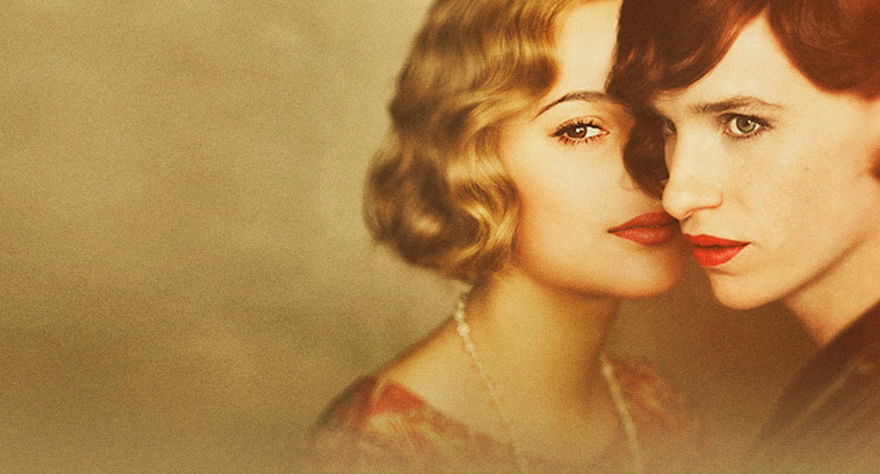
A pretty portrait of the wrong woman.

A pretty portrait of the wrong woman.
Tom Hooper‘s gender-identity period drama The Danish Girl is meant to usher in a better semblance of understanding regarding trans people for those uneducated on the trans experience. It’s about late Danish artist and trans pioneer Lili Elbe (Eddie Redmayne), who in 1930 became one of the first people to undergo gender transition surgery, a journey she embarked upon with the full support of her wife, Gerda Wegener (Alicia Vikander). The story’s presented in the most palatable way possible for wide audiences: exquisite costumes, silky cinematography, gorgeous actors and grand orchestral swells are the film’s veil. Sweeping all that aside, however, reveals an awkward story whose character’s motivations and authenticity feel questionable at best.
Before Lili, there was Einar Wegener, a well-known, respected painter. He’s madly in love with his wife, Gerda, who’s a painter as well though she hasn’t yet achieved Einar’s level of success. Unexpectedly, an act of husbandly support by Einar turns into the most pivotal moment of his life. When standing in for one of Gerda’s models, he becomes she, the women’s clothing she dons awakening a true sense of self. She’s reborn as Lili Elbe. On a lark, she accompanies Gerda to a party and, while Gerda sees it as something of a game, Lili experiences an internal rebirth. From there, questions and threats arise, anxieties fester and mettle is tested as she pursues her her dream of reassignment surgery, though one thing that stays rock solid is the love shared between she and Gerda.
Without a doubt, as a love story, the film is tender and touching and full of integrity (most of this can be attributed to Vikander and Redmayne’s performances, the former of which approaches greatness). But there’s something seriously amiss with the film’s representation of Elbe’s psychological progression throughout the transition. In real life, Elbe spoke of herself in third person so as to express herself to a world totally ignorant to the trans experience. Redmayne does so in his portrayal as well, though his Lili feels more like someone with dissociative disorder than someone wrestling with gender identity. She fully considers Einar to be dead and forgotten, practically wiping her previous life from existence. The real Elbe blossomed into her true self, became more herself than she was before, which by most accounts is a common trans experience. But according to Hooper’s film, she suddenly transforms into someone else entirely as if she was possessed by some other being in her former years. Whether this was intended or not, that’s how it comes across, and the interpretation just feels wrong.
Redmayne’s gifts are unquestionable, but his character’s development being as misguided as it is undermines his work. It’s extraordinary to watch him move and he really seems to have unlocked his feminine side, especially when you notice his unease when Lily’s forced to wear men’s clothing. But when the script dictates that he must act like an insane person he can’t help but get tripped up. Gerda’s journey is much more compelling and logical as she walks beside Lili through the hellfire and brimstone. Vikander exudes so much love, compsassion and charisma that she steals the movie right out of Redmayne’s hands. In fact, when viewed primarily as Gerda’s story and not Lili’s, the movie isn’t half bad. Her career takes off once she starts painting Lili, though it quickly becomes clear that the romantic nature of their relationship is all but dead. Still, she has the courage and commitment to stand strong by her soul mate no matter the circumstances, and in doing so proves herself a hero. It’s a well-realized character and a stunning performance by Vikander, one of this year’s outstanding actors. Matthias Schoenaerts makes a strong impression as well as the couple’s only ally (and Gerda’s eventual lover).
It’s hard to fault Hooper and his art department’s visualization of ’30s Europe. The craftsmanship behind every bit of scenery and costuming we see is staggering, though there’s something offputting about how manicured Lili’s world is considering the uglier aspects of her story. Perhaps a rougher presentation would more appropriately reflect her state of mind. It’s a minor qualm, though, next to the idea that people may come out of this movie believing all people in transition hit some sort of identity restart button, wiping old memories away and storing them in a box somewhere. The most gorgeous pictures in the world can’t cover up phoniness, and that’s exactly what Hooper and Redmayne’s Lili feels like: phony. A pretty portrait of the wrong woman.